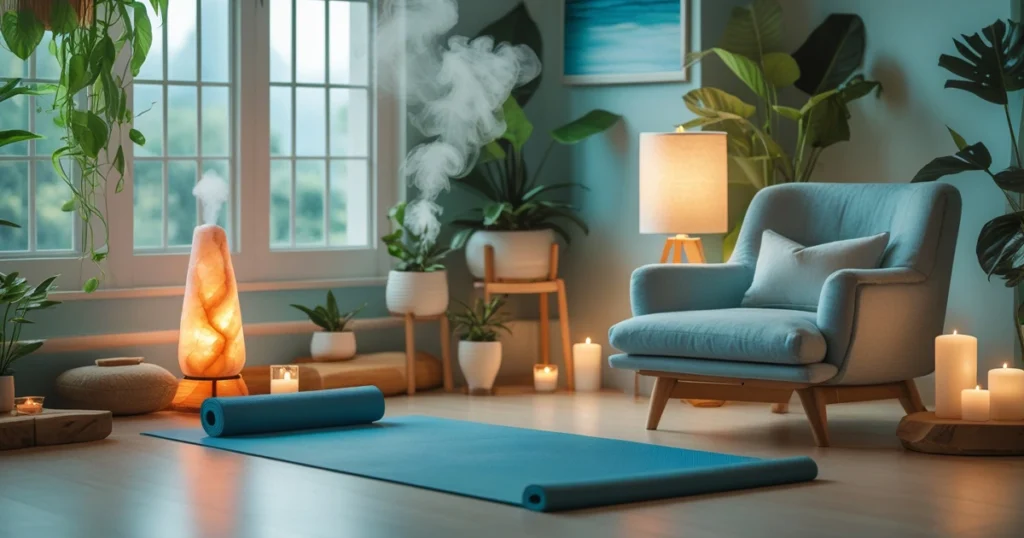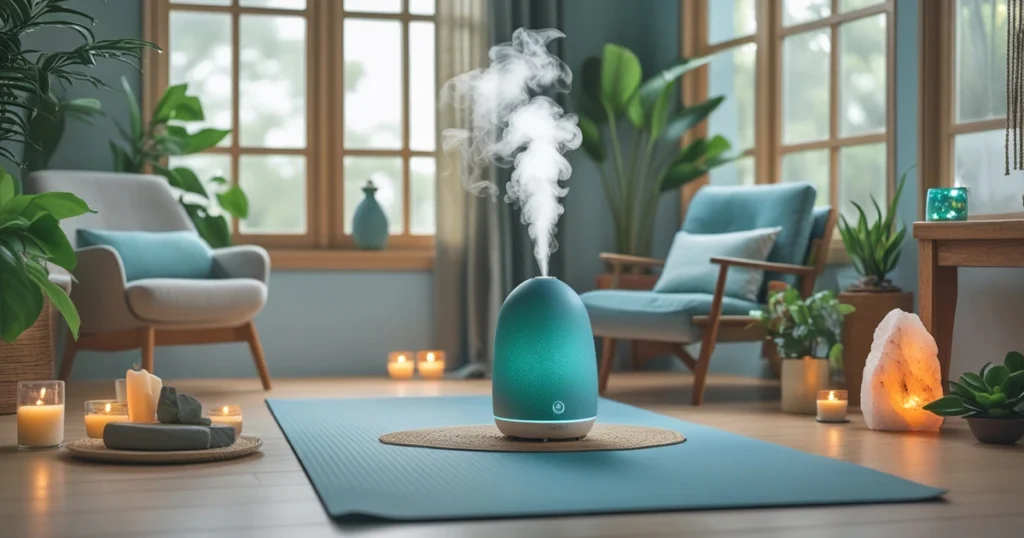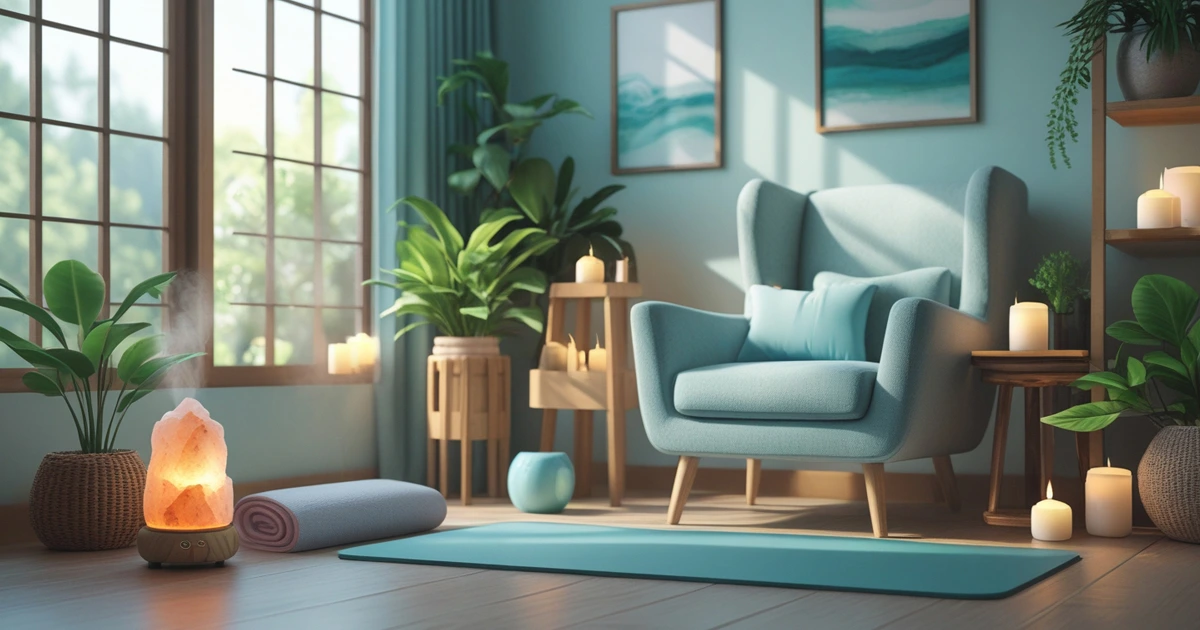Wellness Rooms Your Home can be transformed into the perfect sanctuary
In a world that is rife of stress, distractions and an ever-changing flow of information, having an environment that is dedicated to both physical and mental wellbeing has never been more essential. Wellness rooms are a new fashion in the field of design for interiors that responds to the ever-growing demand for relaxation, mindfulness and overall health within our daily lives. The rooms aren’t only about decor or aesthetics They are meticulously designed sanctuary spaces designed to enhance well-being and personal growth and promote a sense of tranquility.
What is a Wellness Room?
The wellness room is the home that concentrates on physical, mental and emotional well-being. It’s a place where people can be free from the chaos and pressures of everyday life and take part in activities that encourage relaxation, self-care, as well as personal development. Although the idea that wellness is a good thing has been around for a long time The wellness room trend is fairly new and shows the ever-growing awareness.
The goal of a wellness room is to create a sanctuary which enhances a person’s general well-being. Be it through yoga, meditation or sound therapy, or just a place to relax, a wellness room can be a refuge that promotes a healthy life style.
The Importance of Wellness Rooms in Modern Life
- Physical Health
Our lives today are typically very sedentary, with a lot of us sat at work, in meetings, or staring at screens. This can cause various health issues, such as poor posture and eye strain, back pain and sleep issues. A wellness room is an ideal place to tackle these issues by including exercises like yoga, stretching or even breathing exercises.
Integrating fitness-related elements in the wellness room for example, yoga mats or resistance bands dumbbells, could encourage the habit of exercising every day that can lower stress levels, boost the level of energy and overall well-being.
- Mental and Emotional Well-being
Health and mental wellbeing are just as vital as physical health and a health room is the ideal place to take care of it. A space that is specifically designed for relaxation mindfulness, meditation and stress reduction could aid in overcoming the mental fatigue due to our busy schedules.
A space that encourages mindfulness and meditation or provides space for reflection and quiet can have a profound influence on the emotional wellbeing. In the wellness room, people are able to recharge, focus and center their minds. This leads to improved emotional control which reduces anxiety and a better overall mental health.
- Enhancing Creativity and Focus
One of the less talked about benefits of wellness spaces is their capacity to boost the ability to focus and develop creativity. If people are able to have breaks and relax in a place that is conducive to relaxation and relaxation, their minds are more in tackling their projects with renewed energy and focus. Wellness rooms provide an environment that is uncluttered and allows people to be able to connect in a deep conversation with their thoughts and concentrate on their own goals.
The addition sunlight, stimulating artwork, or relaxing scents in the relaxation room can stimulate the imagination. No matter if you’re an artist business owner, or writer an environment that is conducive to creativity will encourage productive thinking and ingenuity.
- Promoting Sleep and Rest
In the frantic life that we live in, sleeping often gets pushed to the side in order to focus on work and other responsibilities. But, insufficient adequate sleep can have adverse impacts on your the health of a person, leading to higher anxiety, a decrease in cognitive performance, and weakening immune systems. Wellness rooms can be used to help promote more restful sleep, and provide an oasis of calm prior to the time to go to bed.
Soft lighting, comfy furniture, soothing colors and soothing sounds can signal the body that it’s time to relax. If you struggle with sleep, creating a setting that encourages relaxation and rest is crucial.

Key Elements of a Wellness Room
In order to create a space for wellness that promotes physical, mental and emotional well-being it is crucial to include particular design aspects. These components will to ensure that the space is functional and relaxing. Here’s a list of the main elements of a well-being room:
1. Lighting
Lighting plays an important aspect in the atmosphere of a relaxation room. A well-lit room can create a peaceful environment that promotes relaxation and meditation. Think about using warm, soft lighting that is adjustable all through the day. Natural light is best because it improves mood and improves levels of vitamin D.
In the evening, you can use the option of adjustable lights to provide a calm setting. It is also possible to incorporate candlelight as well. Himalayan salt lamps that are well-known for their soft light and relaxing effects.
2. Natural Elements
Integrating the natural elements into your wellness room is a good way to enhance the overall ambience of your area. Research has shown that time spent outdoors reduces stress and improves mental wellbeing. Bring a bit of outdoors indoors by incorporating flowers, plants or natural materials such as stones and wood.
Plants such as succulents, peace lilies or ferns can enhance air quality, enhance mood and create tranquil surroundings. The inclusion of natural materials to walls or furniture, like bamboo, wood or stone, may improve the feeling of being in touch to nature.
3. Comfortable Furniture
Comfort is the most important factor in a health space. Pick furniture that is relaxing and is designed ergonomically to help you maintain a healthy posture. Think about investing in a comfy armchair, meditation cushions or a daybed in which you can relax and recharge.
If you are a yoga practitioner or other physical exercises such as yoga, you should have yoga pads, cushions or blocks to provide a practical area for exercising. Furniture should accommodate both movement and relaxation and should serve many purposes.
4. Aromatherapy
Essential oils such as lavender, eucalyptus, chamomile and more are popular for their relaxing effects and may help aid in relaxation. Inhaling these essential oils in your room for a relaxing and peaceful atmosphere will create a peaceful environment and help you relax after a tiring day.
You can try making use of a diffuser for essential oils or candle that are scented with natural oils to provide your home with soothing scents. Also, you can incorporate scented plants such as rosemary or jasmine that provide scent and visual appeal.
5. Sound
A relaxing and soothing ambience can promote relaxation and improve focus. It can even help you sleep better. Try incorporating natural sounds such as the sounds of water running birds chirping or ocean waves that can soothe and calm.
To relax You can try audio devices as well as apps which play binaural or white noise beats. The sounds have been proven to ease stress and increase relaxation while practicing yoga or meditation.
6. Color Palette
The color scheme of your wellness (color palette inspiration) space can affect your mood and mental well-being. Relaxing, neutral colors like gentle greens, soft blues and earthy tones are perfect to create a tranquil and serene atmosphere. These colors have been proven to help reduce stress and promote calm.
Avoid vibrant, stimulating hues like neon or bright shades. Instead, try to create an ambiance that is peaceful and tranquil which encourages a tranquil mental state. Colors that are accented, such as pastel tones or soft golds can bring warmth and visual interest to your area.
7. Personal Touches
A spa or wellness space is supposed to feel like an extension of your own. Personal elements that make the room meaningful will make you feel connected to the room on a deeper basis. It doesn’t matter if it’s art that makes you feel inspired family photos, artwork, or books about personal growth These items can create a space that is uniquely yours.
Personal touches may be a mix of your favourite songs, treasured objects, or spiritual images to resonate with your. These components create a space that feels safe, secure and private.
How to Design Your Own Wellness Room
In designing your wellness space, you must take careful consideration of your objectives and the way you’d like to feel inside the space. This step-bystep guide will assist you in creating your ideal space:

Step 1: Define the Purpose of Your Wellness Room
Begin by determining the goal of your wellness space. Are you looking for a space to exercise and yoga as well as reading, meditation or just a place to relax? Knowing the purpose of the space can help you design your space.
Step 2: Choose the Right Location
Find a tranquil, private room in your house which you can devote to health-related activities. It could be an extra bedroom or an area in your living space or perhaps a smaller corner.
Step 3: Select Relaxing Colors and Natural Materials
Pick calming hues along with natural and organic materials to encourage peace and calm. Neutral, light colors are the best choice, and incorporating wood stones, plants or even stone will bring your space to life.
Step 4: Add Comfortable and Functional Furniture
Choose comfortable and practical furniture that is compatible with your fitness goals. An inviting armchair, cushion for meditation or even a yoga mat will help make your space more practical.
Step 5: Incorporate Lighting and Sound
Install soft adjustable lighting to create the mood. Also, consider using soothing music or natural sounds to help you relax.
Step 6: Personalize the Space
Also, consider adding personal touches to will make your room more warm and reflective of your character. This can include art and plants or even significant objects.

Conclusion
A wellness space is more than a fashion It’s a place that can improve your mental, physical, and emotional wellbeing. When you design an environment that promotes the mind, relaxation and self-care, you’ll create an environment where you can let go of the stress of daily life and rejuvenate your mind and body. It could be a place for meditation, yoga or simply a spot to relax, a wellbeing room could become an integral element of your life, and help you live an enlightened, healthier life. Make your home an oasis of relaxation and enjoy the benefits of having a area for health and wellness.
for more visit Mavlluxury






